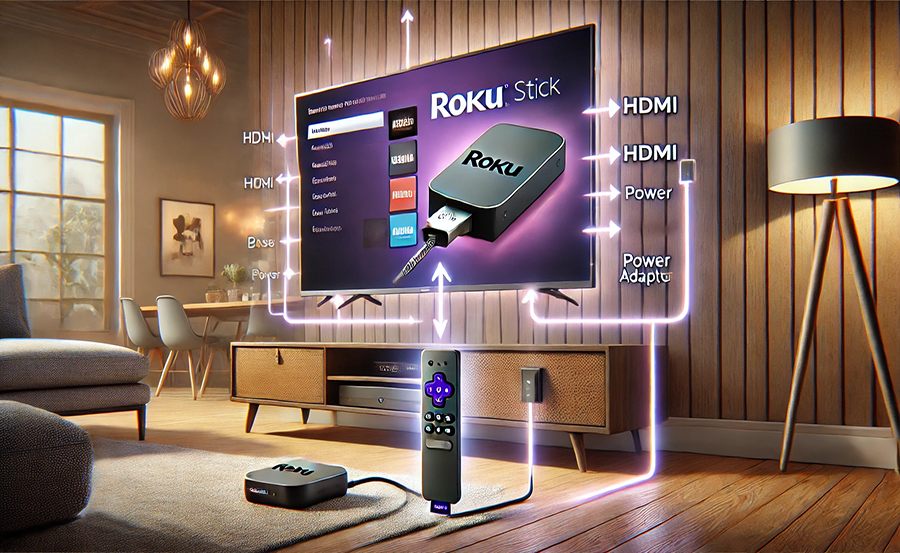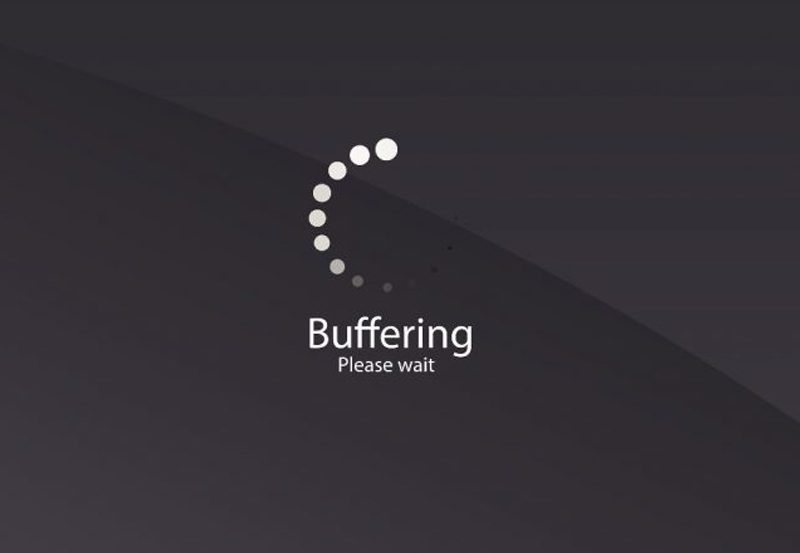Streaming enthusiasts often face the frustrating hiccup of interrupted service during their binge-watching sessions. Understanding the technical intricacies behind IPTV interruptions can empower users to proactively mitigate such issues. This comprehensive guide explores the causes of IPTV service disruptions and provides actionable solutions to enhance viewing experiences, especially for users on platforms like Firestick.
Understanding IPTV: A Quick Overview
Internet Protocol Television (IPTV) has revolutionized the way we consume media. Unlike traditional broadcasting, IPTV delivers content through internet protocols, providing flexibility and variety in entertainment. Understanding the foundational aspects of IPTV is crucial for not only the tech-savvy but also casual users looking to maximize their streaming delight.
With increasing IPTV subscription plans available, choosing the right one requires insight into potential service disruptions and resolutions. It’s more than just getting an IPTV service for Firestick—it’s about understanding what underpins the service quality.
The Mechanism Behind IPTV
IPTV services operate by sending data over a managed or dedicated network, ensuring better reliability compared to the public internet. Such networks provide enhanced quality of service by prioritizing streaming data over less time-sensitive applications. This prioritization ensures a seamless experience, but it’s not foolproof.
Even on a managed network, issues such as latency and network congestion can arise. Recognizing these potential pitfalls helps users address them promptly, keeping their viewing undisturbed.
IPTV vs. Traditional TV Services
One might wonder how IPTV stands against traditional TV. The primary difference lies in delivery. While cable relies on physical connections and air transmissions, IPTV leverages internet technology, offering greater scalability and interactivity.
However, this reliance on internet infrastructure also introduces vulnerabilities that users of traditional services seldom face. To navigate these waters effectively, users must understand the different pressures each system faces. 6 Month IPTV Subscription – Buy Now
Key Components of IPTV: A Closer Look
IPTV relies on a combination of hardware and software, both client-side and server-side. Core components include:
- IPTV Set-Top Box or Apps: Devices and software like IPTV service for Firestick facilitate access.
- Servers: These house the content library and streamline access to numerous channels.
- Content Delivery Network (CDN): Provides fast data distribution to geographically dispersed users.
Each component plays a pivotal role, making the understanding of their function crucial to troubleshooting any interruptions efficiently.
Common Causes of IPTV Interruptions
To address IPTV interruptions, it’s vital to identify the root causes. Below, we dissect common issues leading to degraded performance.
Network Congestion: The Busiest Roadblock
Network congestion is one of the foremost causes of IPTV interruptions. High internet traffic can lead to bottlenecks, similar to rush hour on highways. Factors including provider’s bandwidth limitations and heavy local usage contribute to this congestion.
Subscribers often encounter buffered streams when servers are overwhelmed by simultaneous requests—it’s like trying to squeeze more cars onto an already packed road.
Latency and Packet Loss
Another technical factor hampering IPTV performance is latency—essentially the time it takes data to travel from the server to the viewer. High latency can disrupt data flow, leading to delayed or stalled streams.
Packet loss, which occurs when data packets fail to reach their destination, exacerbates interruptions. Causes range from physical connectivity issues to overburdened network paths.
Hardware and Software Misconfigurations
Errors in hardware setup or software configurations often result in IPTV service disruptions. Incorrect router settings, outdated software, or faulty device firmware can prevent optimal data processing.
Even well-configured systems require regular updates and maintenance to function correctly. Ignoring prompts for updates, whether for apps or device firmware, can lead to unexpected downtimes.
External Factors: Weather and Beyond
Although less common, external factors like severe weather or infrastructure damage can impact IPTV services. Beyond weather, issues such as power outages or network infrastructure failures can disrupt service.
While these events are unpredictable, understanding their potential impact allows users to implement preventive measures or alternative access plans.
Resolving IPTV Interruptions: Practical Solutions
Tackling interruptions requires a multidimensional approach, addressing each potential root cause. Here’s how users can fortify their IPTV experience.
Optimize Your Network Environment
To minimize network congestion, consider upgrading to a higher bandwidth plan if needed. Additionally, using a wired connection instead of Wi-Fi can drastically improve stability and speed.
Routers play a critical role in delivering IPTV services. Ensure yours is up-to-date and placed centrally to minimize signal drop-offs. Enabling Quality of Service (QoS) settings on your router could prioritize IPTV traffic over other internet activities.
Adjust Software Settings and Update Regularly
Keeping software up to date is critical for smooth functioning. Always use the latest firmware for your IPTV set-top box and ensure apps are updated to their most recent versions.
Configuration tweaks, like adjusting buffering settings within the app, can also help manage minor interruptions. Experimenting with different settings to find the optimal configuration for your setup is worth the effort.
Plan for External Disturbances
To guard against external disruptions, consider investing in an uninterruptible power supply (UPS) to keep routers and devices powered during outages. Backup internet solutions, like mobile data, can provide temporary relief during network failures.
For weather-induced interruptions, reliance on satellite connections might be mitigated by simultaneous integration with cable broadband or fiber optics.
Engage with Your Service Provider
Open communication with your IPTV service provider is crucial. They offer technical support and may provide insights into upcoming maintenance or current network issues.
Don’t hesitate to report consistent problems. Providers often appreciate feedback, using it to enhance their service and avoid future issues for all users.
Maximize Your Streaming Delight: Best Practices
While troubleshooting is vital, adopting best practices can preempt many IPTV interruptions.
Schedule Your Streaming Sessions
Using IPTV during off-peak times can significantly improve performance. Avoiding peak hours helps to steer clear of congestion-related issues.
Understanding your local internet usage patterns allows for smarter scheduling, thus maximizing viewing pleasure.
Customize Your Viewing Experience
Modern IPTV services offer various features to tailor the viewing experience. Custom playlists, parental controls, and personalized settings should be leveraged to enhance usability and access.
Explore your IPTV subscription plans and find features that align with your unique viewing habits.
Embrace Ongoing Learning
IPTV technology is ever-evolving. Keeping informed about new advancements helps users adapt and make informed decisions about upgrades and new service options.
Participating in forums or user communities can offer fresh insights and solutions from peer experiences.
Conclusion: Navigating IPTV with Confidence
IPTV offers an unparalleled viewing experience when executed well. By understanding the underlying causes of interruptions and implementing relevant solutions, users can confidently navigate any challenges they encounter.
Empowered with knowledge and proactive steps, viewers can fully indulge in their IPTV content, unhindered by technical interruptions. Embrace the chance to not just watch but enjoy streaming to the fullest, as IPTV technology continues to evolve.
Frequently Asked Questions

To aid users further, here are some frequently asked questions related to IPTV services.
What are the best IPTV subscription plans available?
Choosing the right plan depends on your viewing habits and needed features. Look for providers offering high-quality streams, a diverse channel selection, and robust customer support.
Can I use IPTV service for Firestick effectively?
Yes, the Firestick is a popular choice for IPTV due to its portability and user-friendly interface. Ensure you have a stable internet connection and the latest software for optimal performance.
Why does my IPTV service buffer frequently?
Frequent buffering is often related to network congestion or insufficient bandwidth. Check your internet speed, hardware setup, and consider upgrading your plan or optimizing your network configuration.
Are there legal concerns with IPTV usage?
Legality varies by region and provider offerings. It’s crucial to use legitimate IPTV services that adhere to copyright laws, ensuring a lawful and secure viewing experience.
Is it safe to use free IPTV services?
Free IPTV services often come with security risks, such as malware or hacked streams. It’s recommended to invest in reputable subscription services that provide secure and reliable content delivery.
How can I improve my IPTV service quality?
Enhancing service quality involves addressing network issues, updating software, and adjusting settings. Engaging with your provider for technical support may also offer solutions tailored to your needs.
What is the future of IPTV technology?
IPTV technology is poised for growth, with innovations aimed at improving reliability, quality, and interactivity. Keeping abreast of trends will help you take advantage of the latest in IPTV advancements.
Troubleshoot and Fix Channel Loss in IPTV Streaming





